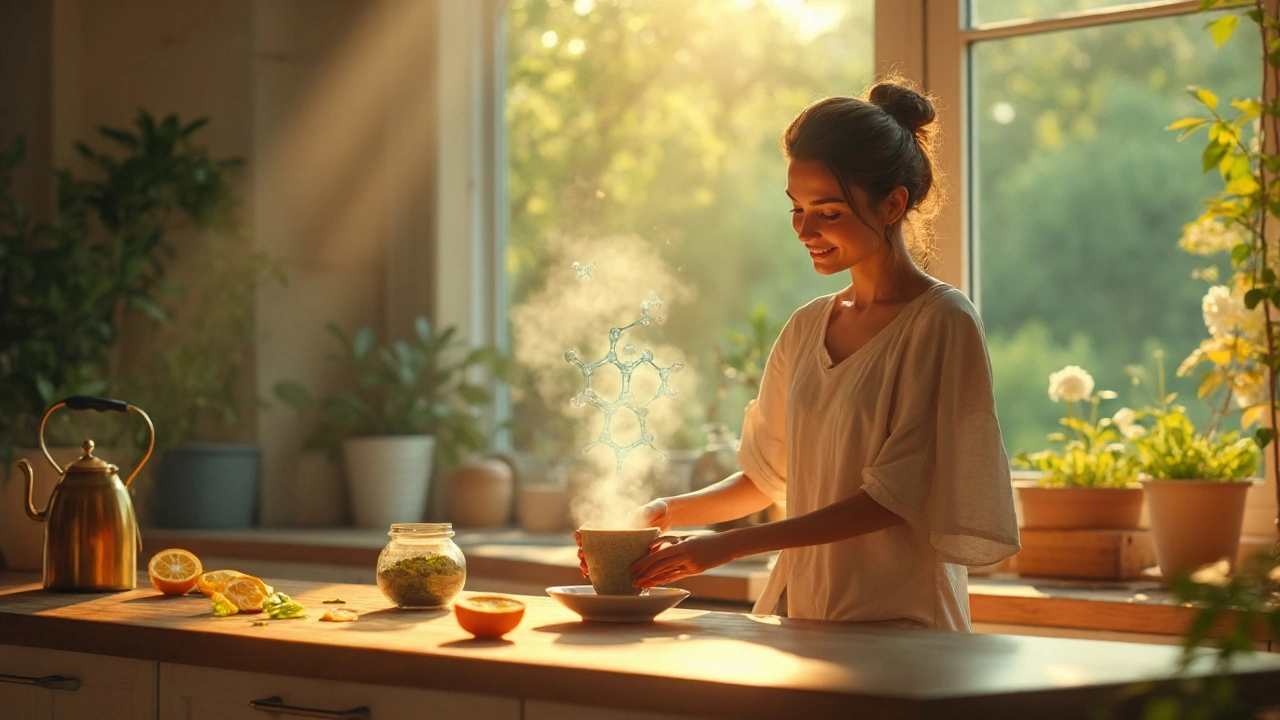
Jiaogulan Uncovered: The Ultimate Adaptogenic Supplement for Health & Wellness
Explore Jiaogulan's science‑backed benefits, how it works as an adaptogen, dosage tips, safety, and comparisons with other herbal supplements.
23 Sep 2025Ever wonder why nutrition blogs keep shouting about antioxidants? Simply put, they’re the body’s cleanup crew. When you eat or breathe, tiny molecules called free radicals pop up. Those free radicals can rust cells, leading to fatigue, skin aging, or even chronic disease. Antioxidants swoop in, neutralize the radicals, and keep everything running smooth.
Most people don’t need to count pills or chase exotic powders. A balanced plate already packs a solid antioxidant punch. Below you’ll find the easiest ways to boost your intake without overthinking it.
Fruits and veggies are the go‑to antioxidant hubs. Berries (especially blueberries, strawberries, and raspberries) top the list because they’re loaded with anthocyanins, the pigments that give them their vibrant colors. Apples, oranges, and grapes add vitamin C, another powerful free‑radical fighter.
Don’t forget the green crew: spinach, kale, and broccoli bring a mix of vitamins A, C, and E, plus flavonoids that protect heart and brain cells. Nuts and seeds—like almonds, walnuts, and sunflower seeds—supply vitamin E and selenium, both essential for cell repair.
If you like a little spice, turmeric and ginger are worth a shout‑out. Their active compounds, curcumin and gingerol, have antioxidant effects that also calm inflammation. Dark chocolate (70% cocoa or higher) is a tasty surprise, offering flavonoids that support blood flow.
First up, they protect DNA. Every time a free radical attacks, it can cause tiny DNA errors that, over years, pile up and raise cancer risk. Antioxidants step in to keep those errors low.
Second, they support skin health. UV light from the sun creates free radicals in skin cells, leading to wrinkles and spots. Vitamin C, vitamin E, and carotenoids (found in carrots and sweet potatoes) help the skin bounce back faster.
Third, they aid heart health. Oxidized LDL cholesterol—bad cholesterol that’s been damaged by free radicals—clogs arteries. Antioxidants keep LDL stable, reducing plaque buildup and lowering heart‑attack risk.
Lastly, they boost recovery after workouts. Intense exercise spikes free‑radical production, causing muscle fatigue. Consuming antioxidant‑rich foods or drinks after a session can speed up repair and reduce soreness.
Want a quick daily plan? Breakfast: oatmeal topped with blueberries and a handful of almonds. Lunch: mixed greens with cherry tomatoes, orange slices, and a drizzle of olive oil. Snack: a square of dark chocolate or a carrot stick with hummus. Dinner: grilled salmon (rich in astaxanthin, a marine antioxidant) with steamed broccoli. Finish with a cup of green tea for an extra dose of catechins.
That’s all you need to start loading up on antioxidants. No crazy supplements, just everyday foods that taste good and keep you feeling fresh. Browse our other articles for deeper dives on specific antioxidants like L‑citrulline, vitamin C, and more—each broken down in plain English for real‑world use.

Explore Jiaogulan's science‑backed benefits, how it works as an adaptogen, dosage tips, safety, and comparisons with other herbal supplements.
23 Sep 2025